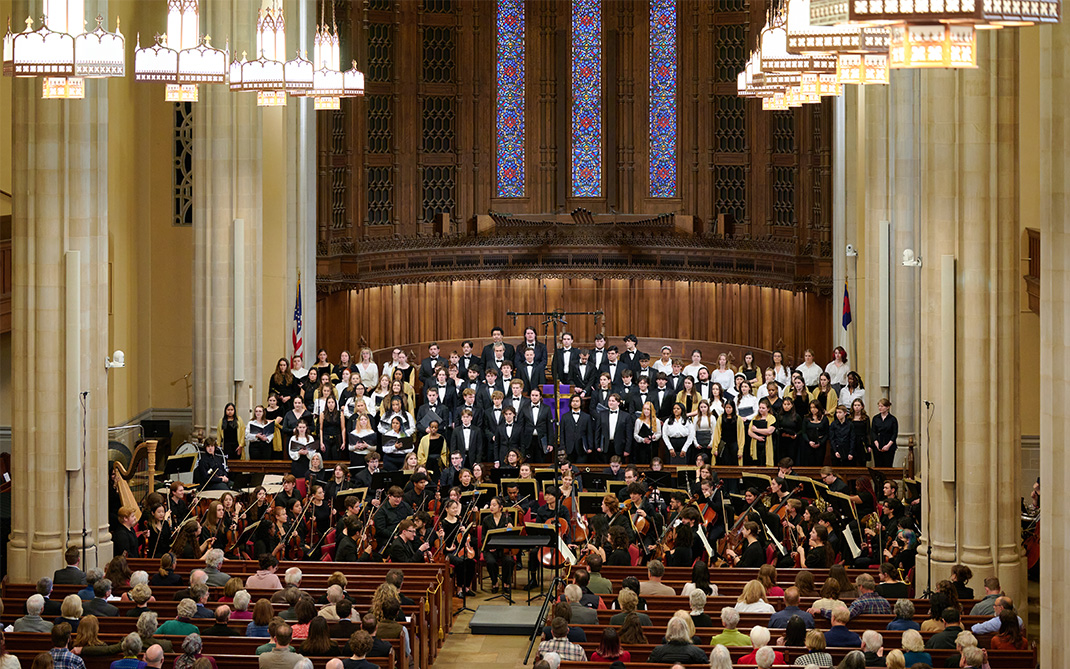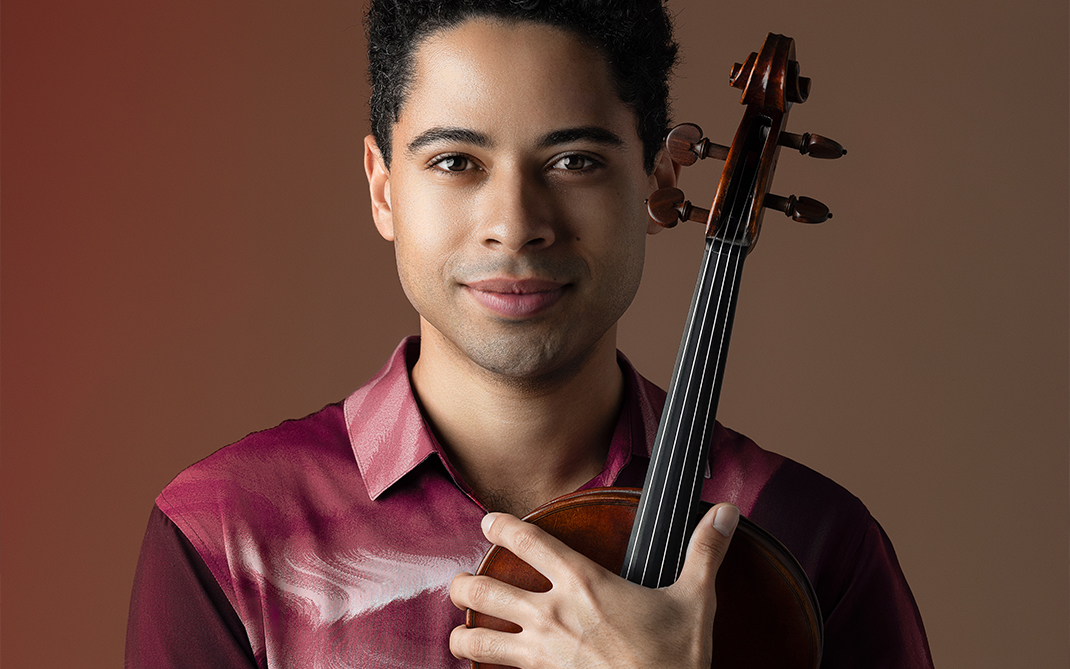Winter Dance at UNCSA to feature world premiere in program of contemporary and ballet works
The School of Dance at UNCSA will present an eclectic program featuring a world premiere and other contemporary and ballet works this February.
Winter Dance will highlight the strengths of both ballet and contemporary students in a program of works of vastly different styles, including “Serenade” by George Balanchine, “RE-(III)” by Shen Wei, “First Impulse” by Claudia Schreier, and “Vital Ground” by Darrell Grand Moultrie (premiere) at 7:30 p.m. Feb. 23-25 and 2 p.m. Feb. 26 at the Stevens Center, 405 W. Fourth St. Tickets are $20 for adults, $15 for students with a valid ID at 336-721-1945 or www.uncsa.edu/performances.
“Vital Ground,” the program’s world premiere by Darrell Grand Moultrie, is described as “rich with hybrid contemporary, secular and classical modalities.” Moultrie, who has emerged as one of America’s most sought-after contemporary choreographers working across multiple genres, says that the costumes will be colorful and fun, evoking life, spirit and vitality, and that the piece will “push the artists to the heights of their physicality and beyond.”

Darrell Grand Moultrie / Photo: darrellmoultrie.com
He continued, “I am excited to come to UNCSA and I hope to inspire the students to be better artists and to appreciate the sacredness of the moment they are in creating their art. Through the process of working with them, I hope they become more exciting and dynamic dancers while also becoming better people.”
Dean Endalyn T. Outlaw described Moultrie as “a nuanced choreographer who appreciates subtlety,” adding that his works “delve into what modern, jazzy and cultural movement can look like whether en pointe, in socks, or barefoot as in “Vital Ground.” Moultrie is a recipient of the Princess Grace Choreography Fellowship Award and has worked with a wide range of ballet companies including American Ballet Theatre, Atlanta Ballet, BalletMet, and Dance Theatre of Harlem. He was selected by Beyoncé as one of the choreographers for her “Mrs. Carter” World Tour, and Tony Award-winning director Diane Paulus tapped him to choreograph the original musical “Witness Uganda” at American Repertory Theater.
The Winter Dance program will also include Balanchine’s iconic “Serenade,” staged by Margaret Tracey, the first original ballet that the master of neoclassical ballet created in America and one of the signature works of New York City Ballet’s repertory. It is performed to Tchaikovsky's 1880 Serenade for Strings in C, Op. 48.
Tracey, director of the Boston Ballet School from 2007-2021, was a student at the School of American Ballet, joined New York City Ballet in 1986, and was promoted to principal in 1991 until her retirement in 2002.
“I spent 20 years enmeshed in Balanchine,” she said. “When you know something so intimately, it’s a joy to share it. I’ve spent the last 20 years as an educator. I get to teach the choreography and teach dancers how to approach the work, because it is part of my DNA.”
Despite the large cast, 26 including 21 in the corps and five principals, everyone has a chance to shine. “Every part feels special,” Tracey said. “You start in the back line and finish in the quiet elegy section. I’ve known this ballet for over 40 years – from the corps to the principal to the audience, and one never grows tired of it. I haven’t yet met a professional dancer who doesn’t love this ballet.”
Balanchine’s choice of music, classical and neoclassical, was an intrinsic part of his modern ballets. One of his most famous quotes is: “See the music, hear the dance.”
“In ‘Serenade,’ you see the marriage between the dance and the movement very, very clearly,” Tracey said. “When I look at the education of these young dancers at UNCSA, they are learning a way to shift their weight within the classical ballet structure that is applicable to modern dance as well. What they learn in this ballet is a wonderful set of skills that will serve them throughout their career.”
Multiple award-winner Claudia Schreier is a rising star in the ballet world and a resident choreographer for the Atlanta Ballet. Of the dynamic and rhythmic neoclassical work “First Impulse,” which premiered in 2019 in Atlanta, Pointe magazine wrote, “Schreier’s movement feels like architecture in motion, making all kinds of steps, even bourrées, seem wondrous and new. …The future of ballet is well and alive.”
Clara Monk is staging it at UNCSA.
“I have been working with Claudia since 2016 when I was student at Columbia University,” said Monk, who is the former artistic director of the Columbia University Ballet Ensemble and a founder and former director of Columbia Repertory Ballet. “Claudia was working with the student dance groups and created a ballet through the dance department. I’ve been staging her works ever since.”
Schreier is currently choreographing a work for the San Francisco Ballet, so she passed the opportunity at UNCSA along to Monk.
“This is my first time engaging with this piece, but I’m very familiar with Claudia’s movement style, and it’s exciting to apply it to a new piece,” Monk said. “It’s a plot-less ballet, but it’s definitely packed with playfulness and bright energy. It starts from a ballet vocabulary and brings in contemporary movement as well.”
The eight men and eight women in the ballet were selected from more than 100 dancers. It contains three movements, set to music by Eino Tamberg.
“Claudia told me that the music is a timeless, humor-filled playground,” Monk said. “Claudia also shared with me that the music has a contemporary sound but a classical structure, which is what she does in her movement, too.”
Chinese American choreographer and director Shen Wei inhabits a cultural-centric and interdisciplinary movement style. His “Re-Triptych” is a meditation on his travel in three parts, with “Re-(III)” drawing upon images of rural communities along the Silk Road and his “impressions of a radically transformed Beijing” that he said he encountered while choreographing the opening ceremonies of the 2008 Summer Olympics.
Kate Jewett (B.F.A. Dance ’05) has been a member of Shen Wei Dance Arts since 2005 where she is rehearsal director and director of education and outreach. Jewett is staging “Re-III” at UNCSA.

Kate Jewett
“I’m kind of his (Shen-Wei’s) right-hand woman,” Jewett said. “When he was in China for the Olympics in 2008, he took a 40-day journey on the Silk Road, and he traveled by foot, camel, train, whatever it took, and then he came back to Beijing. The piece is based on the contrast between the Silk Road journey and the modern city of Beijing.”
On his website, Shen-Wei writes, “The dance’s movement vocabulary is inspired by the dialogue between the individual and the collective, the past and the future. Unlike the other dances in the Triptych, I wanted an original score for this dance. Something new, unheard before.”
The first and last sounds of the work are those that Shen-Wei captured on his Silk Road journey. The rest of the original score is by David Lang.
The first part of the piece is based on groups of dancers walking, creating lines, circles and boxes with their movement.
“They might go six steps forward and four steps back, variations of that, and solos that hint at what is coming – moving from the group to the individual,” Jewett said. “The second half is based on improvisational themes. Oftentimes, the dancers have their eyes closed; it indicates that you are so free and that no one is watching. You are free to express yourself as an individual, and it doesn’t matter what anyone thinks.”
Get the best news, performance and alumni stories from UNCSA.
SUBSCRIBE TO OUR NEWSLETTERS(OPENS IN NEW TAB)(OPENS IN NEW TAB)(OPENS IN NEW TAB)(OPENS IN NEW TAB)(OPENS IN NEW TAB)(OPENS IN NEW TAB)(OPENS IN NEW TAB)(OPENS IN NEW TAB)(OPENS IN NEW TAB)
February 07, 2023




